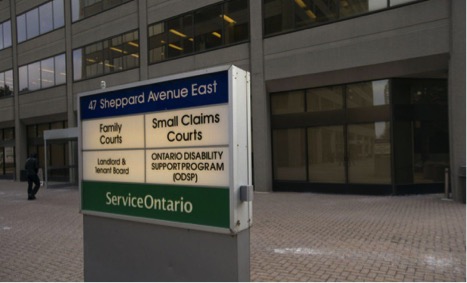
Desperate borrowers were paying 59.99% interest to local lender, but actuaries found the “true” interest rate in high risk lending can often be much higher
After a Toronto Star investigation last October into a series of judgements against people in debt to private lenders, it was announced today that judges of the Small Claims Courts of Ontario will receive training in how to effectively understand what interest rates actually cost borrowers, regardless of what the posted rate in the loan agreement states.
The issue arises from the conduct of one Erez Harosh, whose company XCash Financial has been offering loans to communities in North Toronto, particularly to women in the Filipino community trying to make ends meet in Canada by taking on domestic work to support their families back home. Because many of these people do not have a stable income, banks won’t lend to them, which allows companies like XCash to flourish in the market for riskier short term capital. The loans offered by Mr. Harosh were at posted rates of 59.99%; the criminal interest rate in Canada is 60% and is punishable by up to five years in prison or a fine of up to $25,000 under s. 347 of the Criminal Code.
But this is technically legal, if highly unethical. The legal problem arises when these borrowers are unable to make their monthly payments, which is exacerbated by steep penalties for missed payments: $100 for a bounced payment and $29 every 10 days afterwards until settlement. As a result, the borrower ends up in default and the lender is able to obtain a default judgement in Small Claims Court for a far higher amount—one woman who owed $2,325 was ordered to pay $5,771. Once an order is made by the court system the lender can obtain a garnishment order which gives them the legal right to deduct funds directly from the borrowers’ paycheques, thus getting an even higher payout in the form of a steady cash flow.
The effect of these awards is that the true interest rate being paid—which is a calculation based on the principles of actuarial science—can be much higher, in the range of 150% to 200%. Because they are generalists facing a massive caseload, Small Claims Court judges do not have the time, resources, or training to make these distinctions which allows private lenders to take advantage of the justice system. The judicial education sessions will be hosted by the Canadian Institute of Actuaries (CIA) and will seek to give the judges tools to effectively determine if the true rate being paid on these loans is, in fact, illegal.
Although the problem is being addressed by the legal profession through continuing legal education, this story raises yet another risk inherent in the already maligned and overburdened court system in Canada: opportunism. While crimes like champerty are long established and our legal system is aware of the risk of using court resources for one’s own personal advantage, the story of XCash is especially cautionary in how successfully Mr. Harosh was able to deceive so many judges. What’s even more alarming is that while many of his claims actually were recognized as “outrageous” and “unreasonable” by some judges, he was allowed to keep doing what he was doing. It’s an example of the flipside to the public interest in access to justice—along with people in true need come people looking to use the court as a tool rather than as an end, and we trust the courts to filter the true claimants from false ones.
The controversy over using the courts for higher income is reminiscent of the debate over allowing contingency fees into legal practice in Ontario. In McIntyre Estate v Ontario (Attorney General) (2002), 61 OR (3d) 257 (CA), a group of lawyers sought to represent a woman suing tobacco companies for her husband’s death, although she had no funds to pay them for their time. In its decision the Ontario Court of Appeal allowed lawyers to deliver services under a model where they received a share of the proceeds from winning a case rather than charging a retainer and hourly rate. Although the contingency fee model has advanced the cause of access to justice for people who otherwise would not be able to afford a lawyer, especially in personal injury law, it has also led to questionable legal practices.
An example is the recent scandal at Diamond & Diamond LLP, where an investigation found the firm’s entire business was based on referring clients to other lawyers in return for a share of the proceeds from winning. It’s an important reminder that promoting ideals of equality and access to justice in law must be accompanied by thoughtful analysis of what kinds of risks and opportunities legal reform opens up and how to best control how the courts are used moving forward.
As an afterward, the Toronto Star recently noted that since October—when their investigation was published—Mr. Harosh has filed only two claims in court. Here’s to effective investigative journalism.
